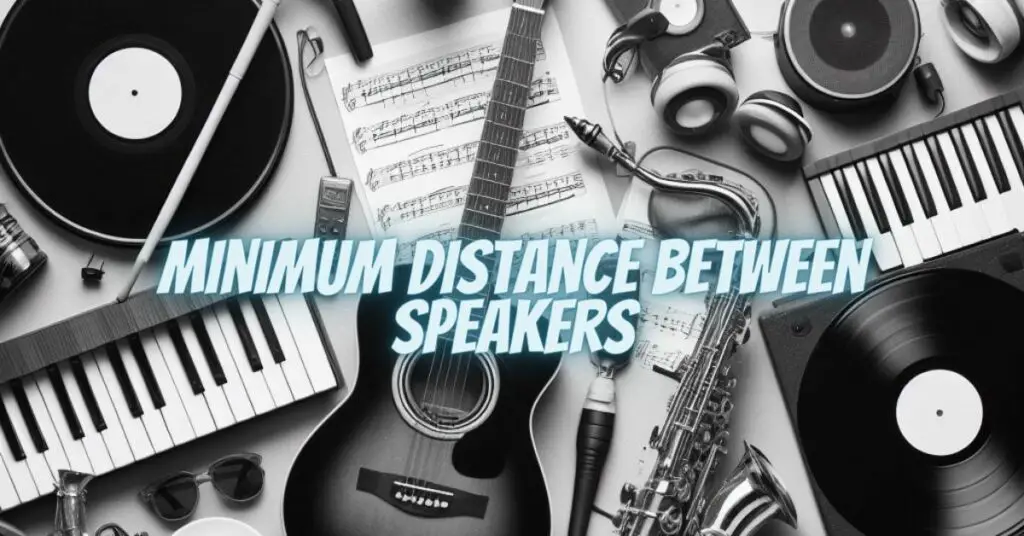The minimum distance between speakers depends on a number of factors, including the size and type of speakers, the size and acoustics of the room, and your listening preferences. However, a good general rule of thumb is to place the speakers at least 4 feet apart. This will help to ensure that the soundstage is wide enough and that the imaging is accurate.
Why is the minimum distance between speakers important?
The distance between speakers is important because it affects the soundstage and the imaging. The soundstage is the perceived width, depth, and height of the sound image. The imaging is the ability to accurately localize the sound source.
When speakers are placed too close together, the soundstage can become narrow and constricted. This is because the direct sound waves from the speakers will interfere with each other. Additionally, the reflections from the wall can also interfere with the direct sound waves, further narrowing the soundstage.
When speakers are placed too far apart, the soundstage can become too wide and diffuse. This is because the direct sound waves from the speakers will not be able to reach the listener’s ears at the same time. Additionally, the reflections from the wall can also arrive at the listener’s ears at different times, further diffusing the soundstage.
How far apart should speakers be?
As mentioned above, a good general rule of thumb is to place speakers at least 4 feet apart. However, the ideal distance may vary depending on the specific factors mentioned above.
For example, if you have small bookshelf speakers, you may be able to place them closer together than if you have large floor-standing speakers. Additionally, if you have a small room, you may need to place the speakers closer together than if you have a large room.
How to find the ideal speaker distance
The best way to find the ideal speaker distance is to experiment. Try placing the speakers at different distances and angles until you find a setup that sounds the best to you.
Here are a few tips for finding the ideal speaker distance:
- Start by placing the speakers 4 feet apart.
- Listen to music and movies from different positions in the room. Pay attention to the soundstage and the imaging.
- If the soundstage is too narrow, try moving the speakers further apart. If the soundstage is too wide, try moving the speakers closer together.
- You can also try angling the speakers slightly towards your listening position. This can help to focus the sound and improve the imaging.
Other factors to consider
In addition to the distance between the speakers, there are a few other factors that can affect the soundstage and the imaging, such as:
- Speaker height. The speakers should be placed at ear level when you are seated in your listening position.
- Room acoustics. The room acoustics can have a big impact on the soundstage and the imaging. If you have a hard-surfaced room, the sound waves can be reflected and distorted. To improve the room acoustics, you can add soft furnishings, such as carpets, curtains, and rugs.
- Speaker type. The type of speaker can also affect the soundstage and the imaging. For example, bookshelf speakers typically have a narrower soundstage than floor-standing speakers.
The minimum distance between speakers depends on a number of factors, including the size and type of speakers, the size and acoustics of the room, and your listening preferences. However, a good general rule of thumb is to place the speakers at least 4 feet apart. Experiment with different speaker distances and angles to find a setup that sounds the best to you.


